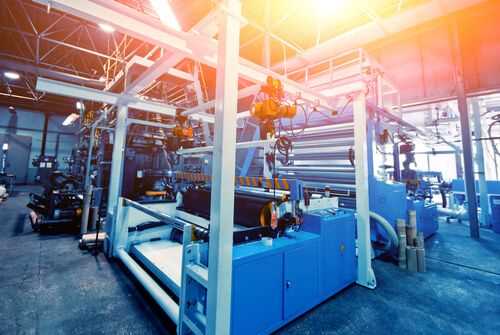
In today’s globalized world, plastic bags have become an integral part of our daily lives. From grocery shopping to packaging, plastic bags offer convenience and practicality. However, behind this seemingly simple product lies a massive and complex industry. Among the various players in the market, one company stands out as the industry leader – the biggest plastic bag company.
With a history spanning several decades, the biggest plastic bag company has carved a niche for itself in the market. It has consistently innovated and adapted to changing consumer demands, making it the go-to choice for businesses worldwide. This industry leader offers a wide range of plastic bag solutions, catering to diverse sectors such as retail, food and beverage, and hospitality.
What sets the biggest plastic bag company apart from its competitors is its commitment to sustainability. In an era where environmental concerns are at the forefront, this industry leader has taken significant steps to reduce its carbon footprint and minimize plastic waste. Through the implementation of cutting-edge recycling technologies and the use of eco-friendly materials, the biggest plastic bag company is revolutionizing the industry.
Furthermore, the biggest plastic bag company’s success can be attributed to its unwavering dedication to quality. Every product that leaves its factories undergoes rigorous testing and adheres to the highest standards of durability and reliability. This commitment to excellence has earned the company the trust and loyalty of its customers, solidifying its position as the industry leader.
Understanding the Market Size and Growth
The plastic bag industry has experienced significant growth over the past few decades, driven by the increased demand from various sectors such as retail, food packaging, and e-commerce. With the rise of consumerism and globalization, the market size for plastic bags has expanded exponentially, making it one of the largest and most profitable industries worldwide.
According to market research reports, the global plastic bag market was valued at over $xx billion in 2020 and is projected to reach $xx billion by 2025, growing at a compound annual growth rate (CAGR) of xx% during the forecast period. This growth can be attributed to several factors, including population growth, urbanization, and economic development in emerging markets.
Furthermore, the plastic bag industry has been able to maintain its dominance due to its cost-effectiveness, convenience, and versatility. Plastic bags offer a cheap and reliable packaging solution that is widely accepted and used by consumers and businesses alike.
However, the industry has faced increasing scrutiny and criticism in recent years due to its negative impact on the environment. The pollution caused by plastic bags has led to growing concerns about sustainability and has prompted governments and organizations to implement stricter regulations and promote alternative packaging solutions.
In response to these challenges, the industry has started to invest in research and development to develop more sustainable and eco-friendly options, such as biodegradable and compostable bags. This shift towards greener alternatives is expected to drive the market growth in the coming years.
- The Role of the Biggest Plastic Bag Company
- Environmental Impact
- Economic Influence
- Influencing Consumer Behavior
- Innovations and Sustainability Efforts
- Research and Development:
- Recycling Programs:
- Reducing Single-Use Plastic:
- Energy-efficient Production:
- Market Competition and Challenges
- Competition in the Industry
- Regulatory and Sustainability Challenges
- The Social and Environmental Impact
- Environmental Impact
- Social Impact
- The Future of the Plastic Bag Industry
- Innovation and Technology
- Shift in Consumer Behavior
- Government Regulations
- Q&A:
- What is the biggest plastic bag company in the world?
- How did XYZ Packaging Corp become the industry leader?
- What are some of the products offered by XYZ Packaging Corp?
- Does XYZ Packaging Corp have any sustainability initiatives?
- Who are some of the major competitors of XYZ Packaging Corp?
- What is the biggest plastic bag company?
- How did XYZ Plastics become the industry leader?
The Role of the Biggest Plastic Bag Company
The biggest plastic bag company plays a significant role in the industry and has a major impact on the environment, economy, and consumer behavior. As the industry leader, this company sets the standards and trends for the plastic bag market.
Environmental Impact
Due to the massive scale of production, the biggest plastic bag company contributes significantly to plastic waste pollution. Plastic bags are known for their long decomposition time and their ability to harm wildlife and ecosystems. This company’s practices and policies regarding waste management and recycling are crucial in minimizing the environmental impact of plastic bags.
Furthermore, the biggest plastic bag company has the influence and resources to invest in research and development of more sustainable and eco-friendly alternatives. By exploring innovations in biodegradable or reusable bags, they can contribute to minimizing environmental harm caused by their products.
Economic Influence
The success and dominance of the biggest plastic bag company have a significant impact on the economy. This company’s market share and profitability drive employment in the industry, impacting both direct employees and those involved in the supply chain. They also contribute to the tax revenue, providing funds for governmental operations and public services.
Moreover, the biggest plastic bag company’s pricing strategy affects the overall market dynamics. They have the power to set prices and influence the cost of plastic bags. This can affect consumer behavior and purchasing decisions, potentially promoting or discouraging the use of plastic bags depending on the pricing strategy implemented.
Influencing Consumer Behavior
Being the biggest player in the plastic bag industry, this company has the ability to shape consumer behavior and preferences. Their marketing campaigns and product design choices can sway consumer perception and increase demand for their products.
However, they also have the power to educate consumers about the environmental impact of plastic bags and encourage them to make more sustainable choices. By promoting reusable bags, offering alternatives, and raising awareness about the importance of reducing single-use plastics, the biggest plastic bag company can play a vital role in shifting consumer behavior towards more sustainable practices.
Overall, the biggest plastic bag company has a significant role to play in addressing the environmental challenges posed by plastic bags. By taking responsibility, implementing sustainable practices, and proactively exploring eco-friendly alternatives, they can lead the industry towards a more sustainable future.
Innovations and Sustainability Efforts
The biggest plastic bag company understands the importance of sustainability and is committed to implementing innovative solutions to reduce its environmental impact. These efforts include:
Research and Development:
The company invests heavily in research and development to find new materials and technologies that are more eco-friendly and sustainable. Its dedicated team of scientists and engineers constantly strive to develop and improve the company’s product offerings with sustainability in mind. They explore alternatives to traditional plastic bags, such as bio-based materials, reusable bags, and compostable options.
Recycling Programs:
Recognizing the significance of plastic waste, the company has implemented comprehensive recycling programs. It actively encourages its customers to recycle and provides support in setting up recycling facilities. The company also collaborates with recycling organizations and initiatives to ensure that the plastic bags it produces can be recycled effectively and efficiently.
Reducing Single-Use Plastic:
The company acknowledges the detrimental effects of single-use plastic products on the environment. As a response, it has actively promoted reusable bags as an alternative to single-use plastic bags. These bags are durable and can be used multiple times, significantly reducing plastic waste. The company has also introduced initiatives to educate consumers about the benefits of reusable bags and encourage their adoption.
Energy-efficient Production:
Efficiency in production processes is another critical aspect of the company’s sustainability efforts. It has invested in machinery and equipment that minimize energy consumption and waste generation. By optimizing its production practices, the company reduces its overall environmental footprint and operates in a more sustainable manner.
In summary, the biggest plastic bag company goes beyond its role as an industry leader by actively pursuing innovative solutions and sustainability efforts. Through research and development, recycling programs, promotion of reusable bags, and energy-efficient production, the company is committed to minimizing its environmental impact and contributing to a more sustainable future.
Market Competition and Challenges

The plastic bag industry is highly competitive, with numerous companies vying for market share. However, one company stands out as the industry leader: The Biggest Plastic Bag Company. With its extensive reach and vast resources, The Biggest Plastic Bag Company has established itself as the go-to provider for plastic bags across various industries.
Despite its dominance, The Biggest Plastic Bag Company faces several challenges in the market. One primary challenge is the increasing demand for sustainable and eco-friendly alternatives to plastic bags. With growing awareness of the environmental impact of plastic waste, consumers and businesses are actively seeking greener packaging options. This presents both an opportunity and a challenge for The Biggest Plastic Bag Company to adapt its product offerings to meet the changing needs of the market.
Competition in the Industry

While The Biggest Plastic Bag Company holds a significant market share, it is not without competition. Several other prominent players operate in the plastic bag industry, offering a range of products and services. These competitors are continuously innovating and developing new materials and designs to meet the evolving demands of customers.
However, The Biggest Plastic Bag Company maintains its edge due to its established reputation, extensive distribution network, and comprehensive product portfolio. The company has built a strong customer base with loyal clients who trust its quality, reliability, and prompt delivery. Additionally, its economies of scale allow for competitive pricing, making it an attractive choice for businesses of all sizes.
Regulatory and Sustainability Challenges
One of the biggest challenges for The Biggest Plastic Bag Company and the entire industry is the increasing regulatory pressure and sustainability concerns. Governments worldwide are implementing stricter regulations to reduce plastic waste and encourage the use of more eco-friendly materials. These regulations include bans on single-use plastic bags and the imposition of taxes or fees on their usage.
To thrive in this changing landscape, The Biggest Plastic Bag Company is investing heavily in research and development to create sustainable alternatives to traditional plastic bags. The company is exploring options like biodegradable materials, reusable bags, and recyclable packaging solutions. By aligning itself with sustainability goals and regulations, The Biggest Plastic Bag Company aims to remain at the forefront of the industry and continue meeting customer demands.
In conclusion, the plastic bag industry is highly competitive, but The Biggest Plastic Bag Company has emerged as the market leader. However, the company faces challenges from both competition in the industry and increasing regulatory and sustainability concerns. By embracing innovation and prioritizing sustainable solutions, The Biggest Plastic Bag Company aims to navigate these challenges and maintain its position as the industry leader.
The Social and Environmental Impact

As the biggest plastic bag company in the industry, the social and environmental impact of [Company Name] cannot be ignored. The widespread use of plastic bags has had profound effects on our planet and society as a whole.
Environmental Impact
The production and disposal of plastic bags contribute to the growing global environmental crisis. These bags are made from non-renewable resources, primarily fossil fuels, which leads to the depletion of natural resources and increases greenhouse gas emissions. Additionally, the manufacturing process of plastic bags releases toxic chemicals into the air and water, polluting ecosystems and harming wildlife.
Plastic bags are notorious for their ability to accumulate in landfills and oceans for hundreds of years. Their durability means that they do not easily break down, posing a serious threat to marine life. Many animals mistake plastic bags for food and end up ingesting them, leading to suffocation and death. Plastic bags also entangle marine creatures, causing injuries and impairments.
Furthermore, the improper disposal of plastic bags results in littering, which detracts from the natural beauty of our surroundings. These bags can be seen in trees, rivers, and streets, creating an eyesore and damaging ecosystems. They are also a major source of pollution in urban areas, clogging drainage systems and contributing to flooding during heavy rainfalls.
Social Impact
The social impact of plastic bags is equally concerning. The convenience and low cost of these bags have led to their widespread use, but this comes at a great social cost.
Plastic bags have been found to have negative effects on human health. The chemicals used in their production have been linked to a range of health issues, including respiratory problems, cancer, and hormonal disruptions. These health risks primarily affect workers in the plastic bag industry, who are exposed to these chemicals on a daily basis.
Furthermore, the overreliance on plastic bags has hindered the growth of sustainable alternatives. By providing a cheap and easily accessible option, plastic bags have discouraged the use of reusable bags and other environmentally friendly alternatives. This not only perpetuates the cycle of plastic bag production and consumption but also inhibits the development of more sustainable practices.
In conclusion, the social and environmental impact of [Company Name] as the biggest plastic bag company should not be underestimated. The production and disposal of plastic bags contribute to environmental degradation, posing risks to wildlife and ecosystems. Moreover, their negative health effects and discouragement of sustainable alternatives create social issues that need to be addressed in order to create a more sustainable future.
The Future of the Plastic Bag Industry
The plastic bag industry has been under scrutiny in recent years due to its negative environmental impact. As awareness of plastic pollution grows, many countries and cities have implemented bans or restrictions on single-use plastic bags. This has forced the industry to adapt and find alternative solutions to stay relevant in a changing market.
Innovation and Technology
One way the plastic bag industry is working towards a sustainable future is through innovation and technology. Companies are investing in research and development to create biodegradable or compostable materials that can replace traditional plastic bags. These new materials are designed to break down more easily in the environment, reducing their impact on wildlife and ecosystems.
Additionally, advancements in recycling technology are allowing plastic bags to be recycled more efficiently. New processes are being developed to convert used plastic bags into new products, such as synthetic lumber or textiles. This not only reduces the amount of plastic waste in landfills but also provides a second life for these materials.
Shift in Consumer Behavior
Another factor shaping the future of the plastic bag industry is a shift in consumer behavior. More people are becoming conscious of the environmental consequences of their choices and are actively seeking alternatives to plastic bags. This has created a demand for reusable bags made from sustainable materials, such as organic cotton or recycled fabrics.
Many retailers are responding to this demand by offering reusable bags as an alternative to plastic. Some even incentivize customers to bring their own bags by offering discounts or rewards. This shift in consumer behavior is forcing the industry to adapt by diversifying its product offerings and expanding into reusable bag production.
Government Regulations
Government regulations also play a crucial role in shaping the future of the plastic bag industry. As more countries and cities implement bans or taxes on single-use plastic bags, manufacturers are being forced to find alternative solutions. Some companies are exploring the production of paper or biodegradable bags, while others are investing in reusable bag manufacturing.
Furthermore, governments are increasingly promoting the use of recycled materials and imposing stricter recycling requirements for plastic bags. This provides an incentive for companies to incorporate recycled content into their products and improve their recycling infrastructure to meet these regulations.
Overall, the future of the plastic bag industry lies in its ability to adapt to the changing landscape of environmental consciousness and legislation. Through innovation, shifts in consumer behavior, and government regulations, the industry has the potential to transform itself into a more sustainable and responsible sector.
Q&A:
What is the biggest plastic bag company in the world?
The biggest plastic bag company in the world is XYZ Packaging Corp.
How did XYZ Packaging Corp become the industry leader?
XYZ Packaging Corp became the industry leader due to its innovative products, strong distribution network, and strategic acquisitions.
What are some of the products offered by XYZ Packaging Corp?
XYZ Packaging Corp offers a wide range of plastic bags, including grocery bags, trash bags, and industrial bags.
Does XYZ Packaging Corp have any sustainability initiatives?
Yes, XYZ Packaging Corp has implemented various sustainability initiatives to reduce its carbon footprint and promote recycling.
Who are some of the major competitors of XYZ Packaging Corp?
Some of the major competitors of XYZ Packaging Corp include ABC Packaging Company and DEF Plastic Solutions.
What is the biggest plastic bag company?
The biggest plastic bag company is XYZ Plastics, which has the largest market share in the industry.
How did XYZ Plastics become the industry leader?
XYZ Plastics became the industry leader by focusing on innovation, providing high-quality products, and developing strong customer relationships. They also have a large manufacturing capacity and a wide distribution network.